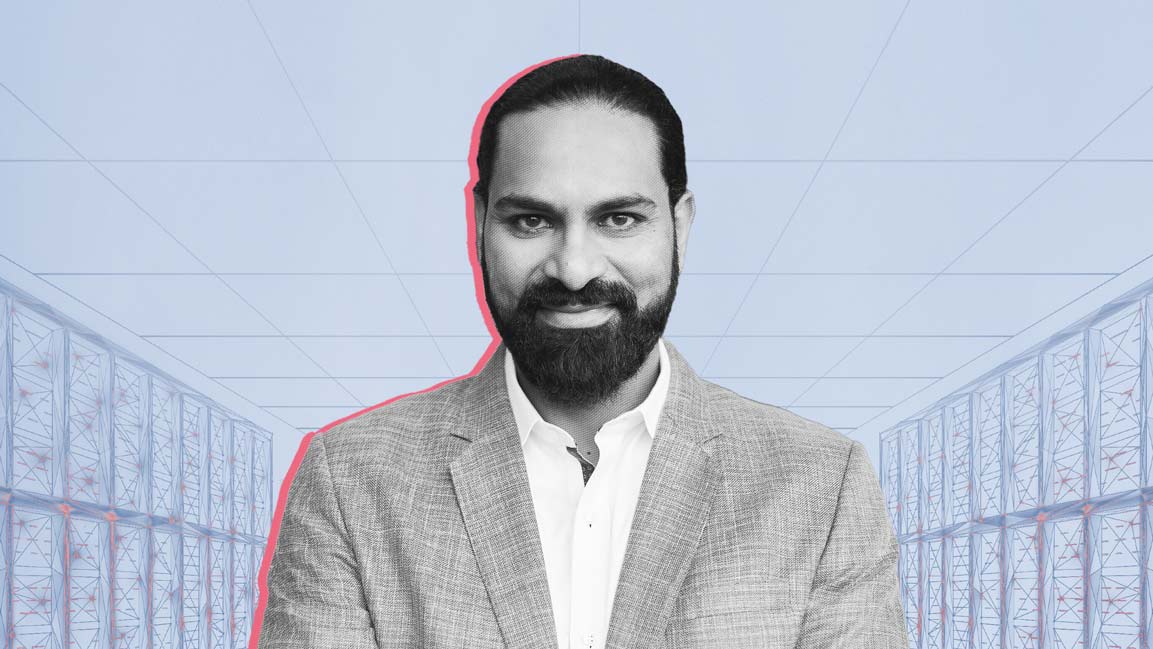How CtrlS Builds for Scale as Compute Demands Climb
Across the country, data centers are scrambling to scale up as AI applications fuel a sharp rise in computing and storage needs.
News
- Meta Expands AI’s Vocabulary to 1,600 Languages
- Google Bridges Cloud Power and Privacy with Private AI Compute
- California’s Genspark Enters AI Unicorn Club with $200 Million Round
- OpenAI Taps Intel’s Sachin Katti to Build Compute Backbone for AGI
- Flipkart Brings Voice-Led Wholesale Ordering to WhatsApp with Sarvam AI
- Varun Berry Steps Down at Britannia, Rakshit Hargave to Take Over

With AI poised to add as much as $500 billion to India’s GDP by 2027, the impact is already visible on the ground. Across the country, data centers are scrambling to scale up as AI applications fuel a sharp rise in computing and storage needs. AI applications require massive computing power and fast, reliable storage, all demands that are already reshaping how India’s data infrastructure is built and managed.
In an interview with MIT Sloan Management Review India, Sridhar Pinnapureddy, Founder and CEO of CtrlS Datacenters, shares how the company is navigating this inflection point while serving over 60 Fortune 500 companies and five of the world’s top seven hyperscalers, or large tech firm that operate massive cloud infrastructure at a global scale.
Infrastructure overload
“At CtrlS Datacenters, we are strategically positioned to capitalize on the AI revolution that is fundamentally reshaping data centers requirements,” said Pinnapureddy. “While the DC Byte Global Datacentre Index 2025 indicates that AI currently represents 11% of global datacenter take-up, this demand has doubled annually since 2022, creating unprecedented infrastructure requirements.”
To respond to this shift, CtrlS is deploying next-generation facilities built specifically to support AI workloads, especially those involving high-intensity computing like training large language models (LLMs).
These facilities include GPU-optimized infrastructure, which supports graphic processing units used for AI tasks, advanced liquid cooling systems that send coolant directly to the chips, redundant power supply setups to avoid outages, and ultra-low latency networks for fast data transfer—essential for AI and machine learning operations.
Energy crunch
As data centers become more power-hungry, access to reliable and affordable electricity has become a key concern. “Power availability and reliability represent the most critical factors in our site selection and operational strategy,” Pinnapureddy said.
Global data shows that while committed data center capacity has increased sevenfold, under-construction capacity has only grown fourfold, pointing to major bottlenecks.
CtrlS is responding with what it calls a multi-pronged approach. “Our Greenvolt project, which is a solar project that provides power to our Mumbai data center, ensures both sustainability and cost predictability,” he said. The GreenVolt project is a 100 MW solar farm located in Nagpur, Maharashtra. Spread over 320 acres, it uses N-type solar panels (known for their high efficiency) and directly powers the Mumbai campus while helping reduce carbon emissions in line with India’s Net Zero targets.
In addition, CtrlS has formed partnerships with state electricity boards to secure guaranteed power supply and has deployed battery energy storage systems for backup.
“Our facilities consistently achieve Power Usage Effectiveness (PUE) ratios below 1.4,” Pinnapureddy said. PUE is an industry metric—lower values mean more efficient energy use.
The company uses advanced cooling systems, AI-powered energy management, and technologies like waste heat recovery to further reduce its environmental footprint.
Demand-driven strategy
Moody’s has reported that building data centers is becoming significantly more expensive. To manage this, CtrlS is focusing on demand-led planning.
“Our acquisition of Schnabel has been transformational in this regard, giving us an in-house construction capability that allows us to be highly responsive and cost-effective in our build-out approach,” said Pinnapureddy. Schnabel is a construction firm, and having it in-house gives CtrlS control over build speed, quality, and cost.
Rather than adopting a one-size-fits-all model, CtrlS tailors its approach. “In tier-II and tier-III cities, we’ve found that edge data centers provide the perfect solution,” he said. These smaller centers are located closer to users, reducing latency and improving service in areas with lower costs.
In metro cities, the company is acquiring additional land near its existing campuses to prepare for future growth. “Today, close to 2GW land and power is made available to our customers,” he said.
This land-banking strategy of reserving land for future use is especially valuable as construction costs rise. “We continuously monitor market demand patterns, customer deployment timelines, and regional growth indicators to calibrate our investment decisions,” he said.
Weaponizing technology
With global trade tensions affecting semiconductor supply chains, CtrlS is adapting its procurement and risk management strategies.
“The recent US restrictions on AI chip exports and the broader trend of technology being weaponized in diplomatic negotiations have reinforced our belief that building domestic capabilities isn’t just economically prudent, it’s a national security necessity,” said Pinnapureddy.
“We’ve witnessed how India’s dependence on foreign platforms in search, maps, social media, and cloud has created strategic vulnerabilities, and we’re determined not to repeat this pattern in the AI and data center infrastructure space,” he added.
To tackle this, CtrlS is diversifying its supplier base across multiple regions, keeping extra inventory of high-risk components, and ordering equipment well in advance. More importantly, the company is investing in India’s local AI and tech ecosystem.
“Our experience has shown us that every rupee invested in domestic AI and infrastructure capabilities today will generate substantial economic returns—by our conservative estimates, at least 100 times the initial investment over the coming decades,” he said.
Innovative cooling
India’s heat adds another layer of complexity, especially as AI workloads generate more heat than traditional computing. “CtrlS has pioneered the deployment of immersion cooling and direct-to-chip liquid cooling systems that can efficiently manage heat loads while reducing water consumption by up to 60% compared to traditional air-cooling methods,” Pinnapureddy said.
The company also uses closed-loop cooling systems, which recycle water instead of releasing it, and advanced water treatment to reduce use in water-scarce areas.
“We have implemented closed-loop cooling systems with advanced water treatment and recycling capabilities, eliminating discharge and minimizing fresh water consumption in water-stressed regions,” he added. CtrlS also uses thermal energy storage to shift cooling to off-peak hours and solar-powered auxiliary cooling systems, making operations more environmentally friendly.
Policy tailwinds
Recent policy changes are working in favour of data center operators. “CtrlS ensures comprehensive compliance with data localization requirements across sectors including banking, telecommunications, and government services,” Pinnapureddy said. These laws require that sensitive data be stored within India.
CtrlS also supports government-led digital initiatives.
“We actively participate in government consultations on datacenter policies and maintain certifications for handling sensitive data workloads requiring sovereign infrastructure,” he said.
The company benefits from financial incentives, tax relief under Special Economic Zones (SEZs), and is closely aligned with Digital India, Smart Cities, and national digitization efforts.
Market momentum
India has emerged as a key player in the Asia-Pacific (APAC) data infrastructure space.
“CtrlS is capitalizing on India’s position within the APAC region, which demonstrated the strongest Live Supply growth at 19.3% CAGR from 2019 to 2024, with India contributing approximately 900MW of regional capacity additions,” Pinnapureddy said.
CtrlS’s domestic strategy includes building large campuses in Mumbai, Hyderabad, and other tech hubs, and rolling out smaller edge computing facilities in cities like Bhopal, Bhubaneswar, Pune, Ahmedabad, and Kochi.
A major upcoming site is a 40-acre AI-ready campus in Hyderabad’s Chandanvelly Industrial Park. “This hyperscale park has secured 250MW of sanctioned power for its first phase, with the potential to grow to 600MW IT load, and is designed for ultra-high-density racks utilizing liquid immersion cooling and automated network fabrics,” he said.
CtrlS is also eyeing Southeast Asia for international expansion, partnering with companies looking for hybrid cloud and advanced computing infrastructure as part of their digital transformation strategies.




